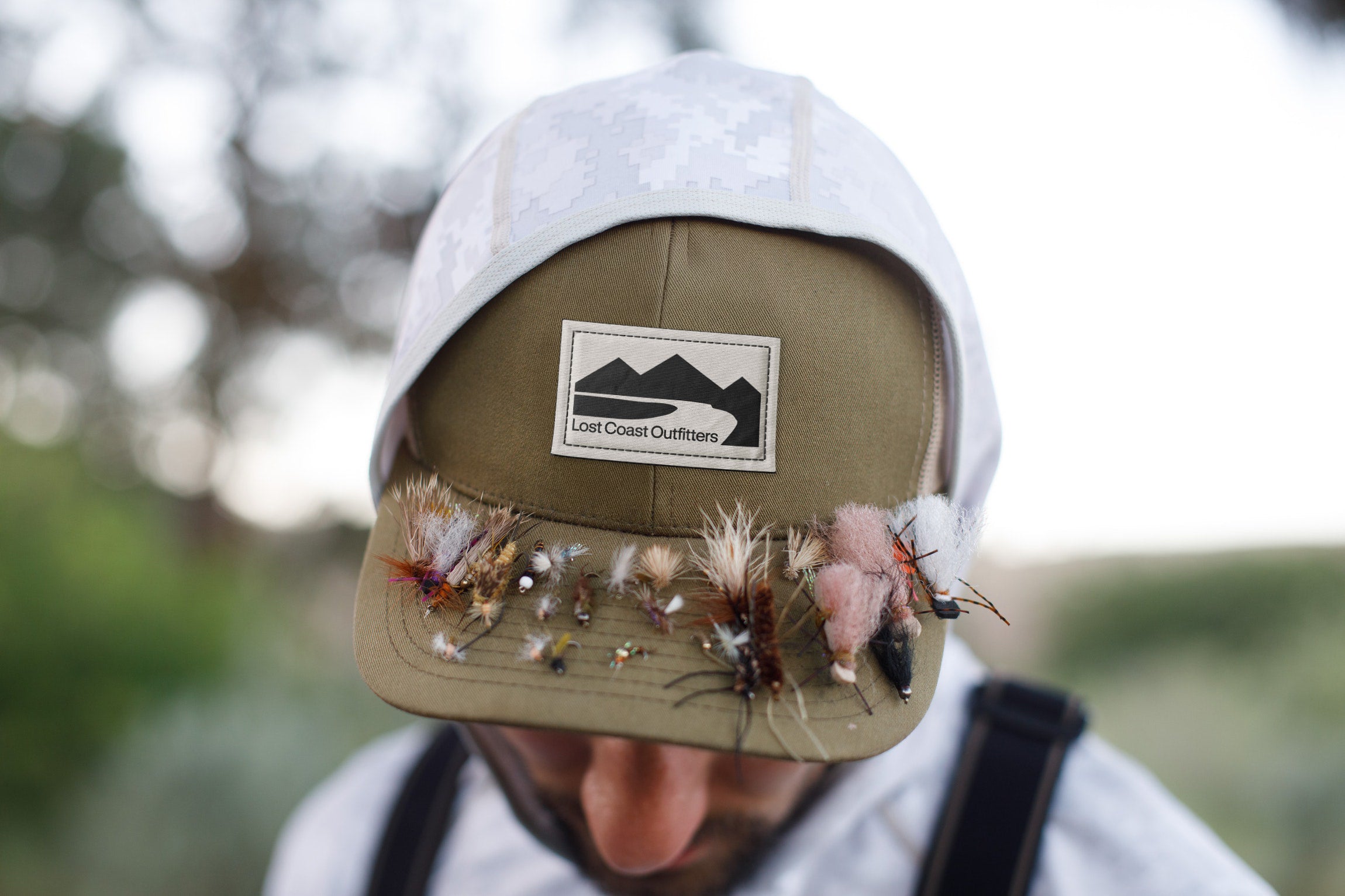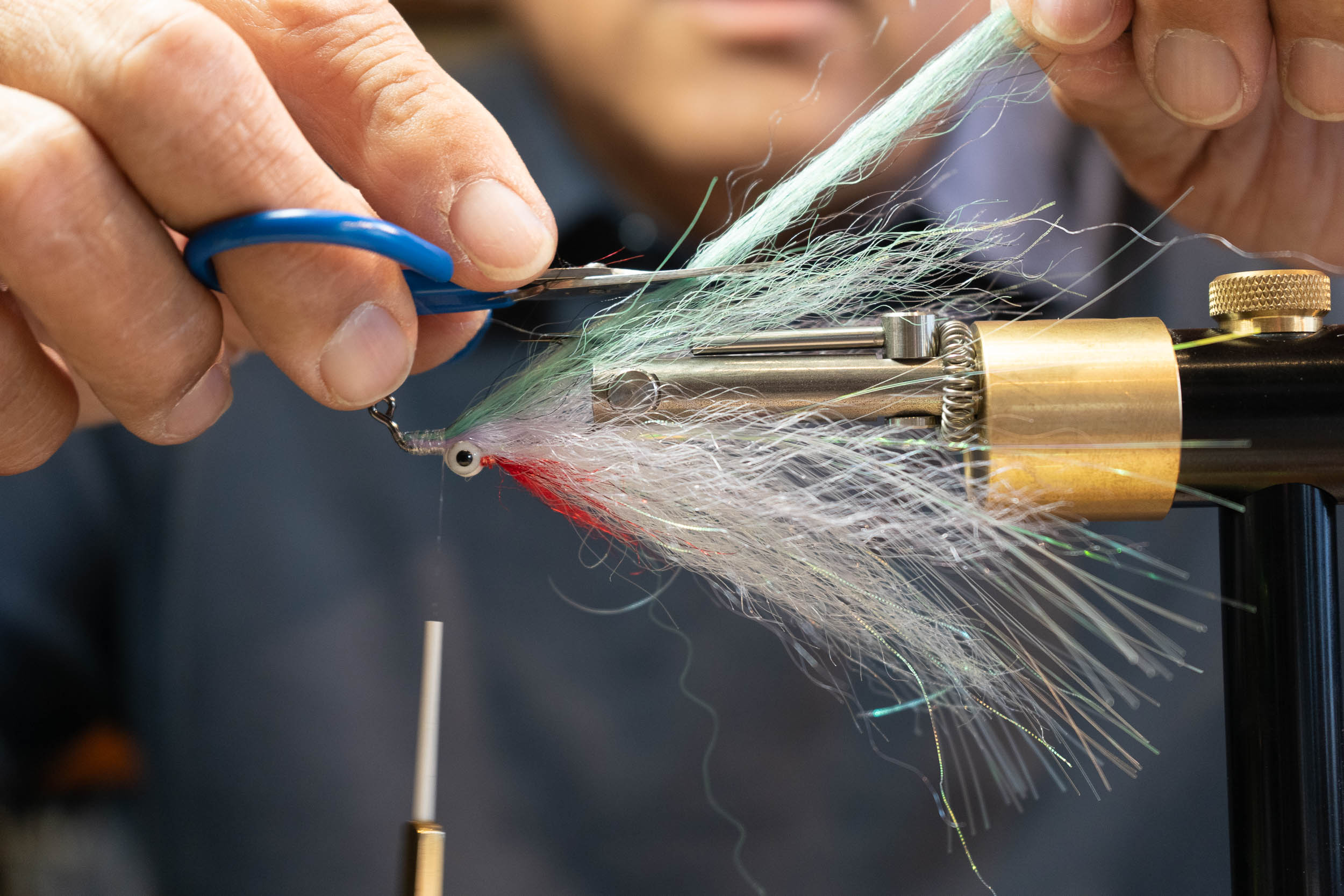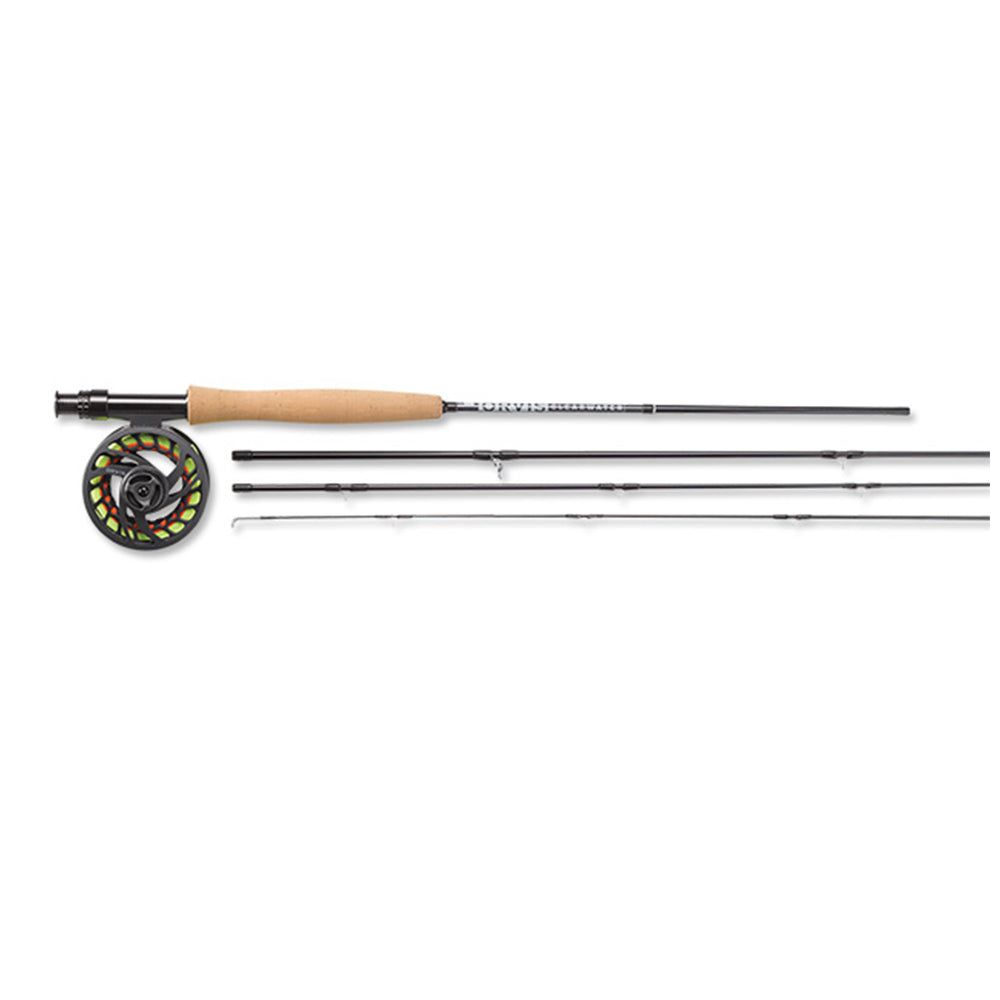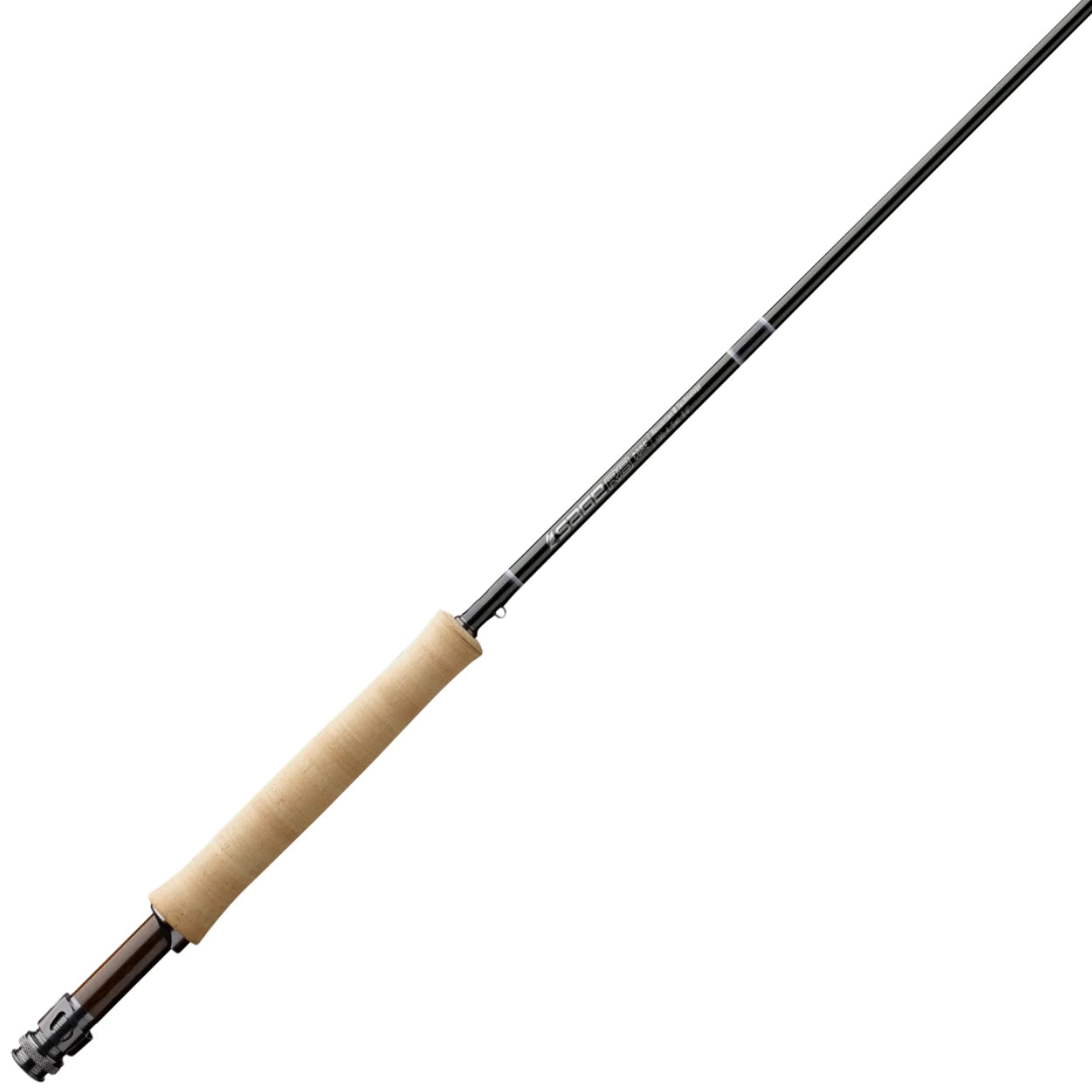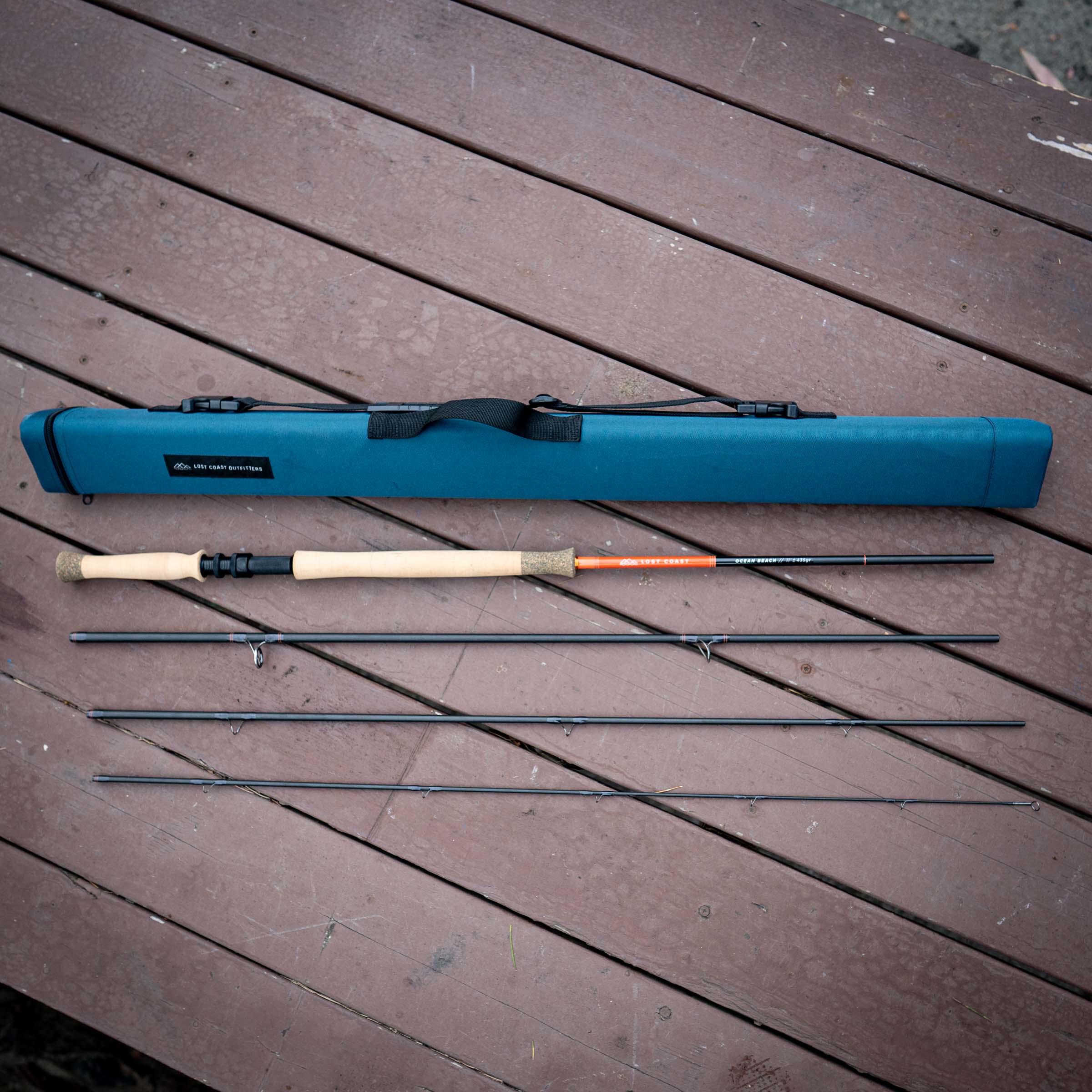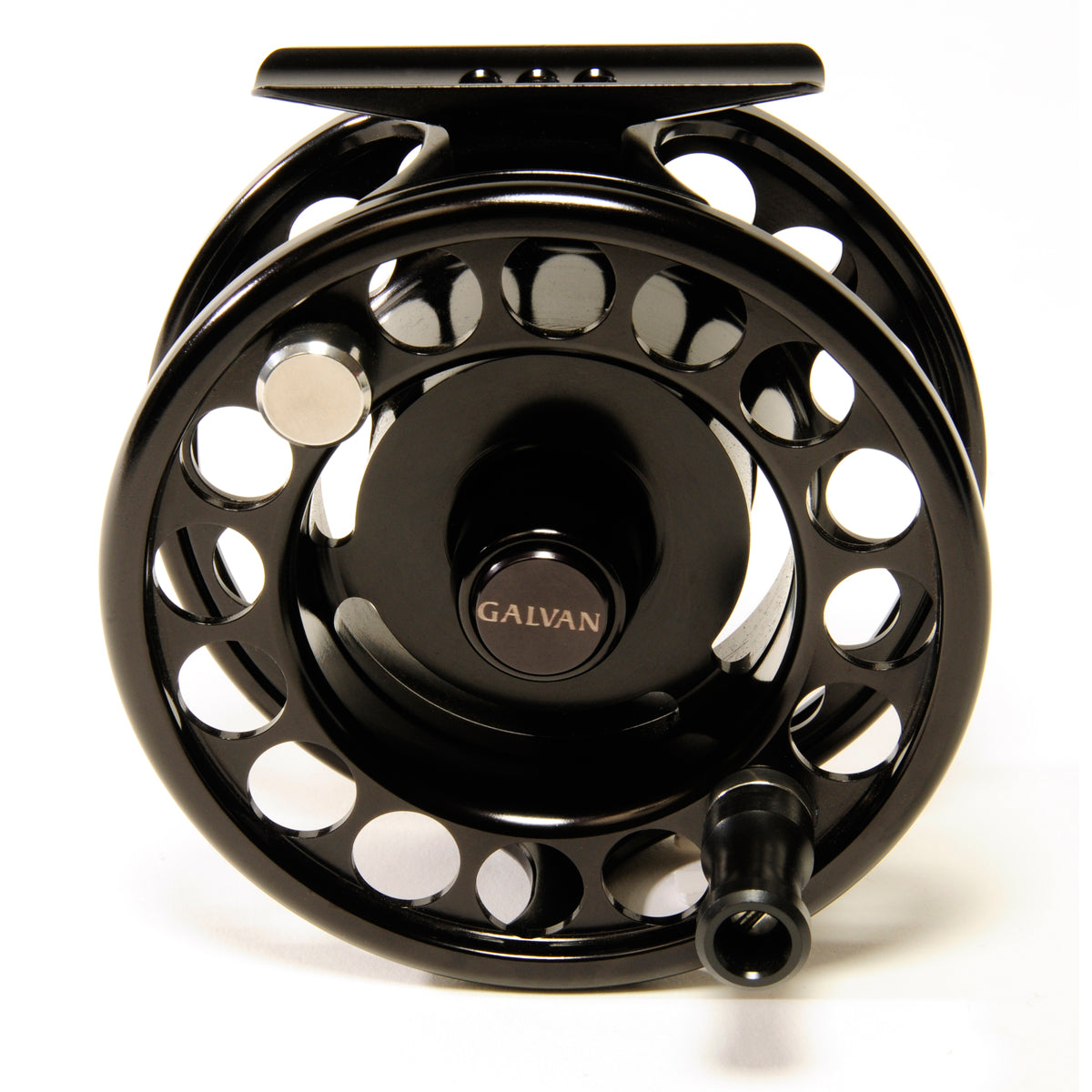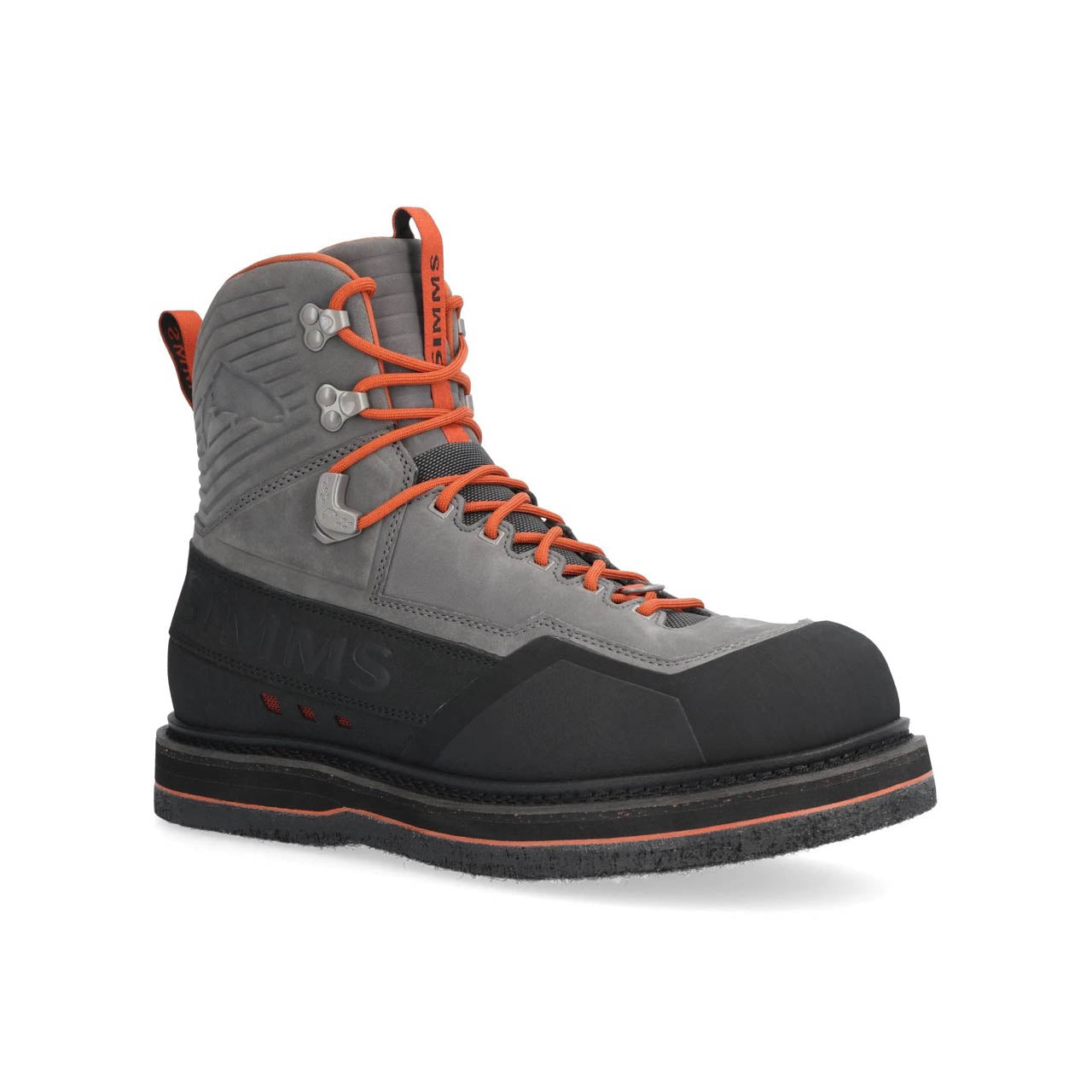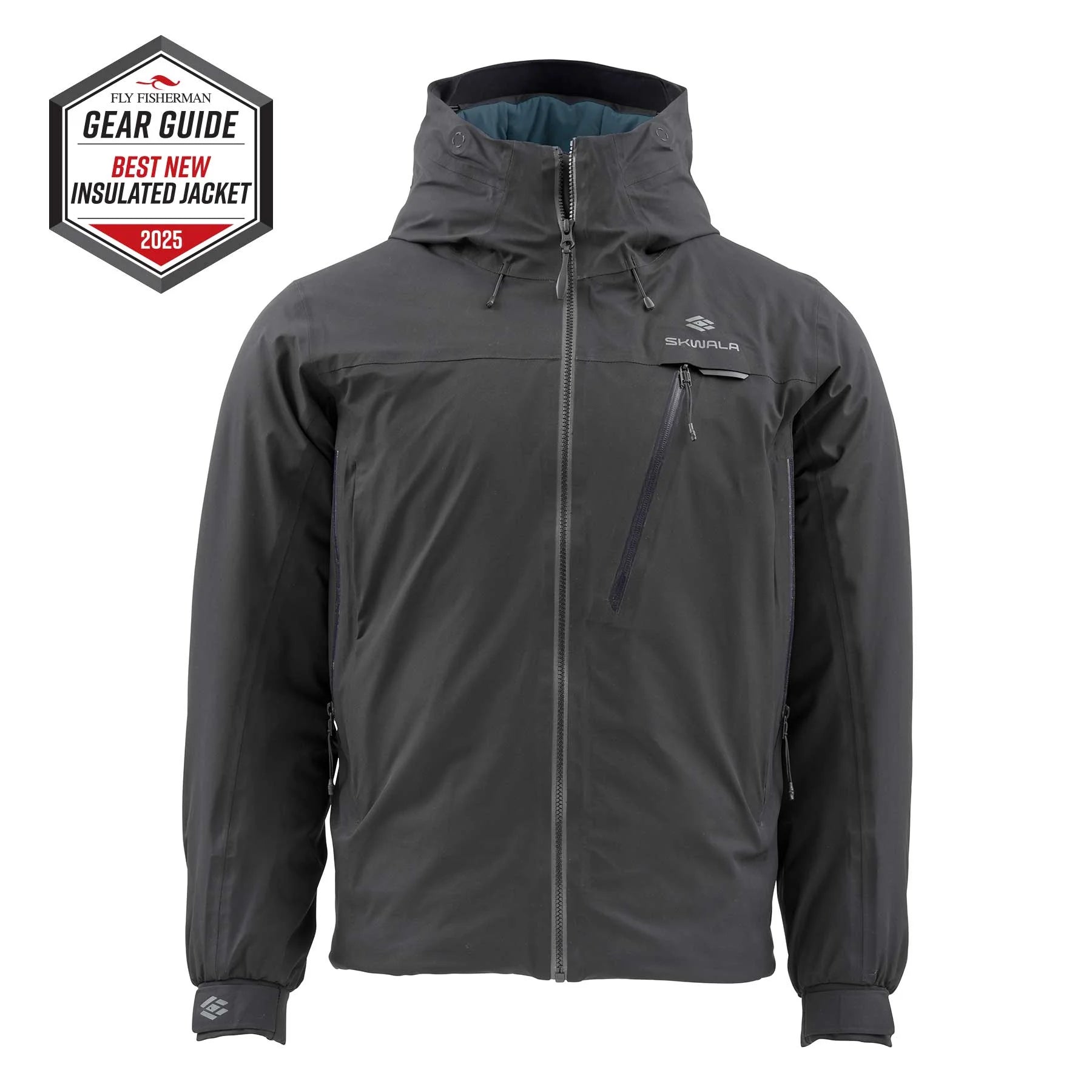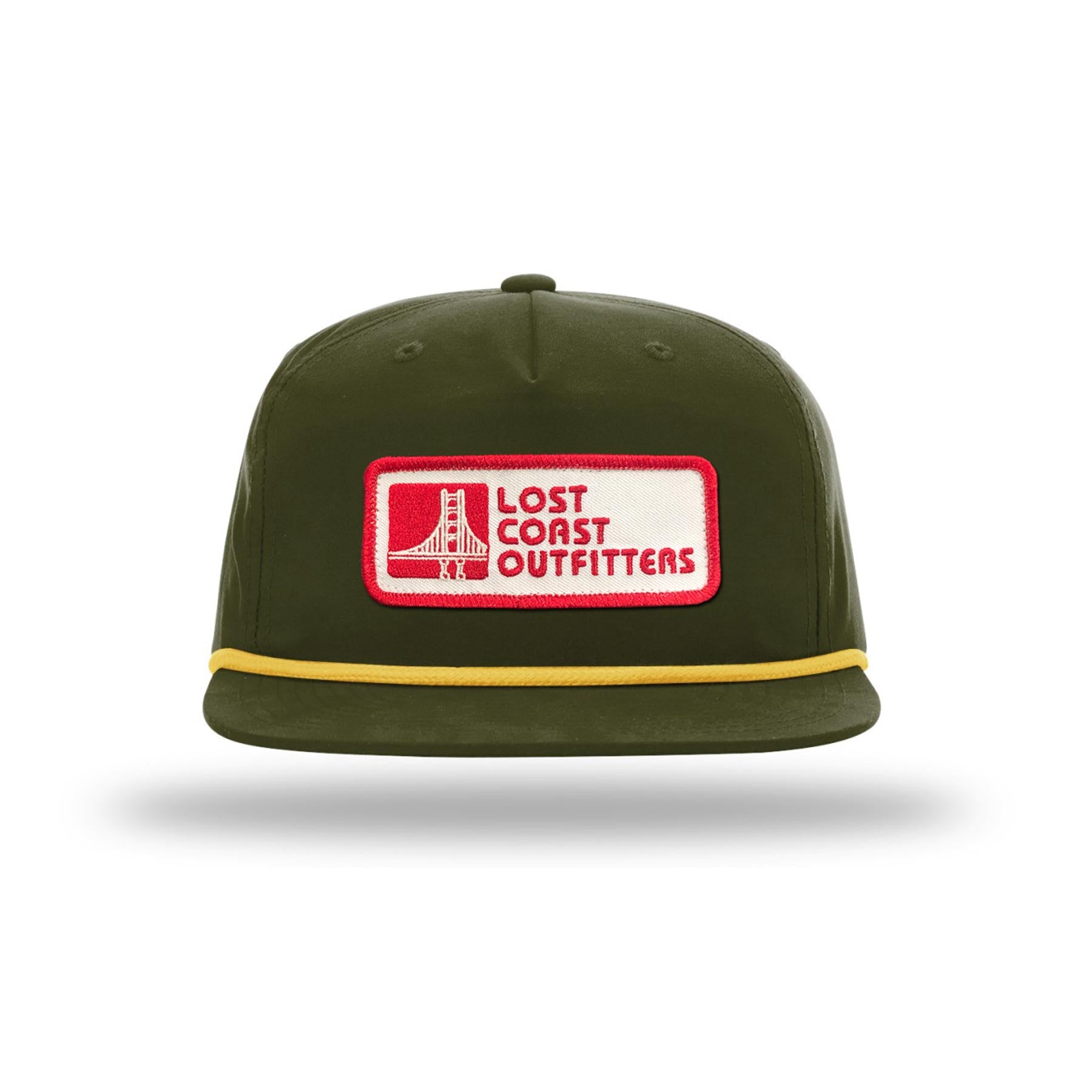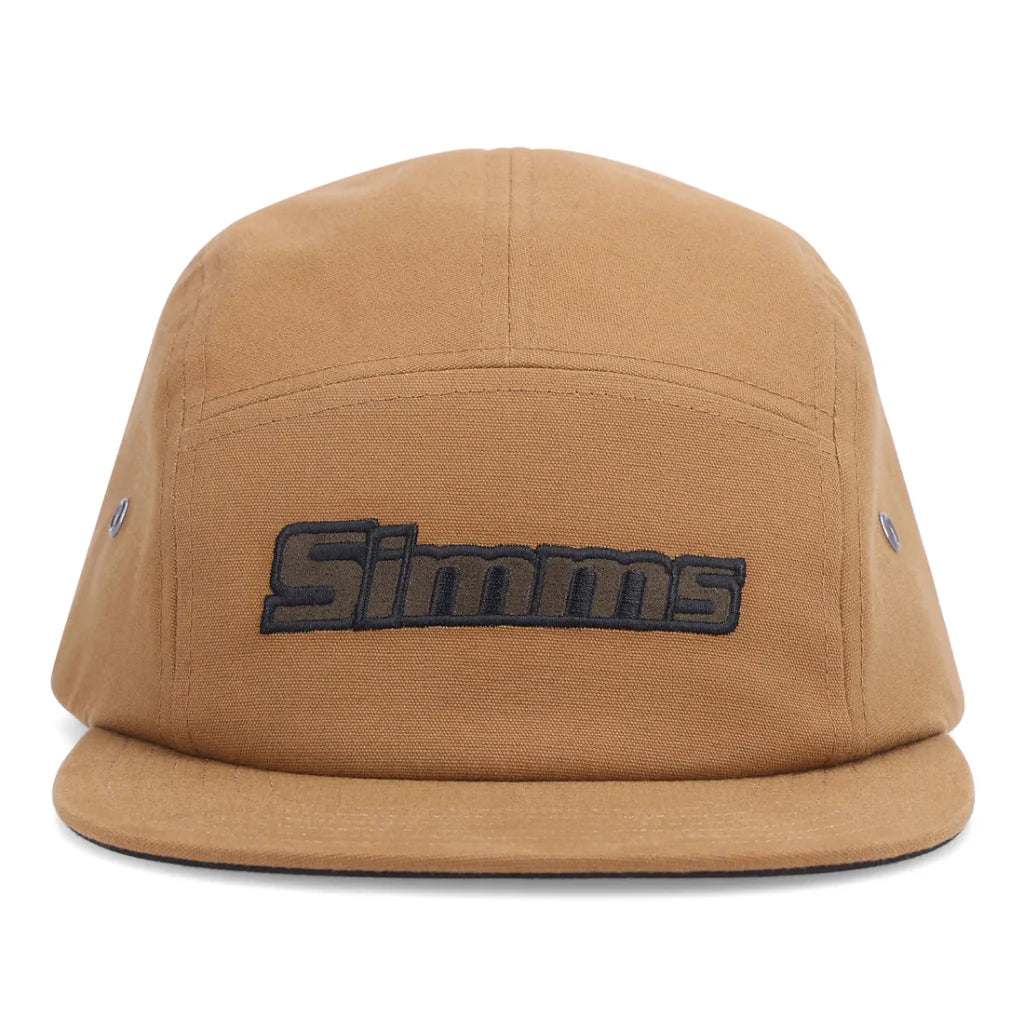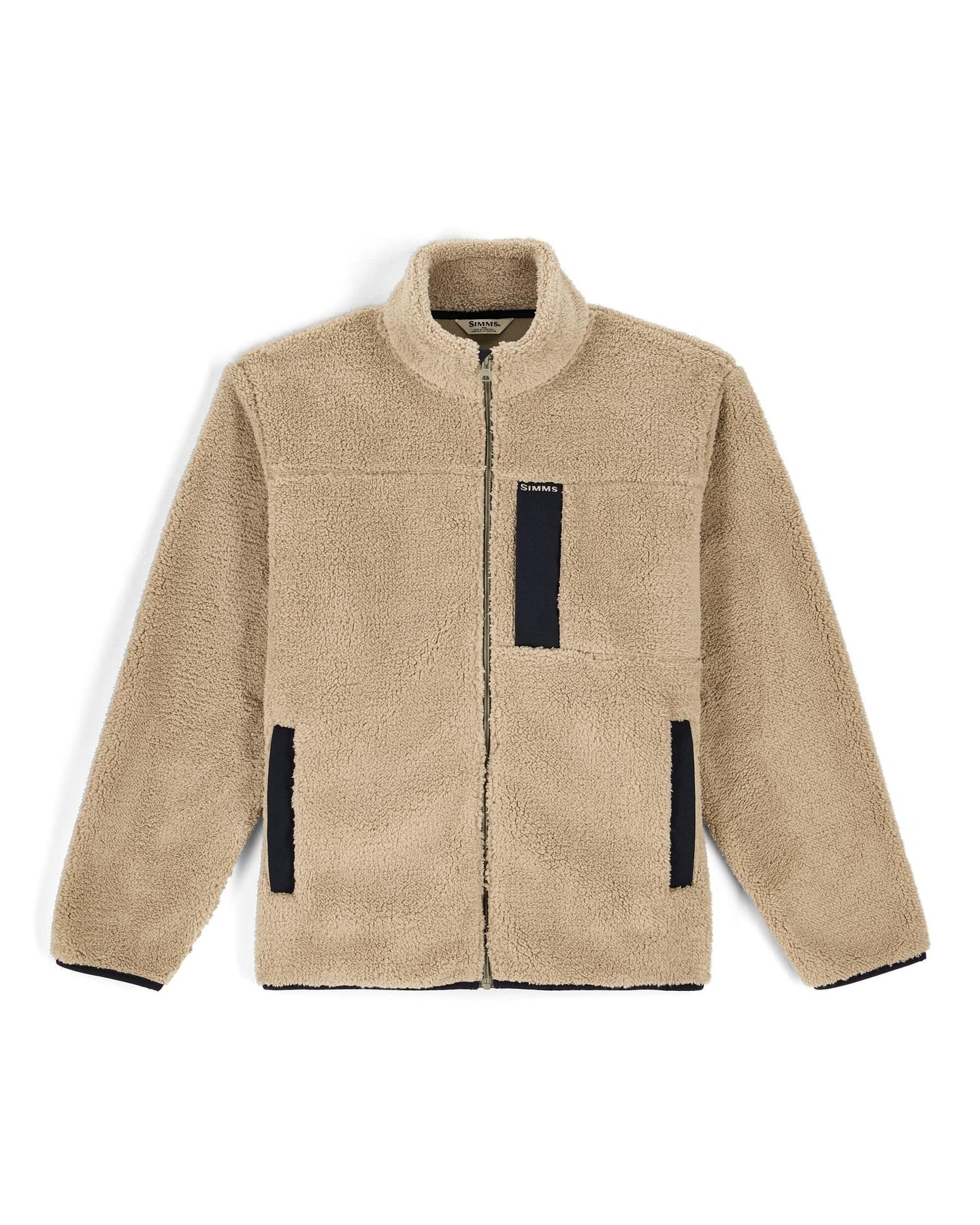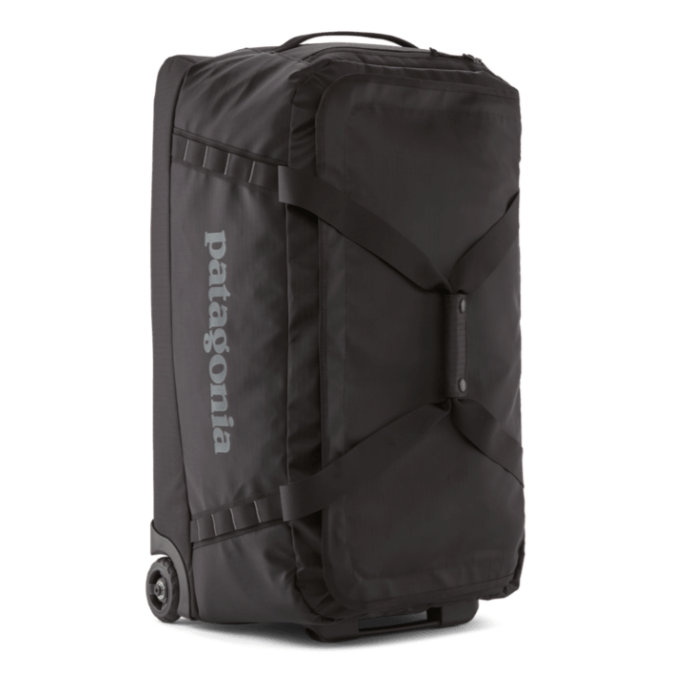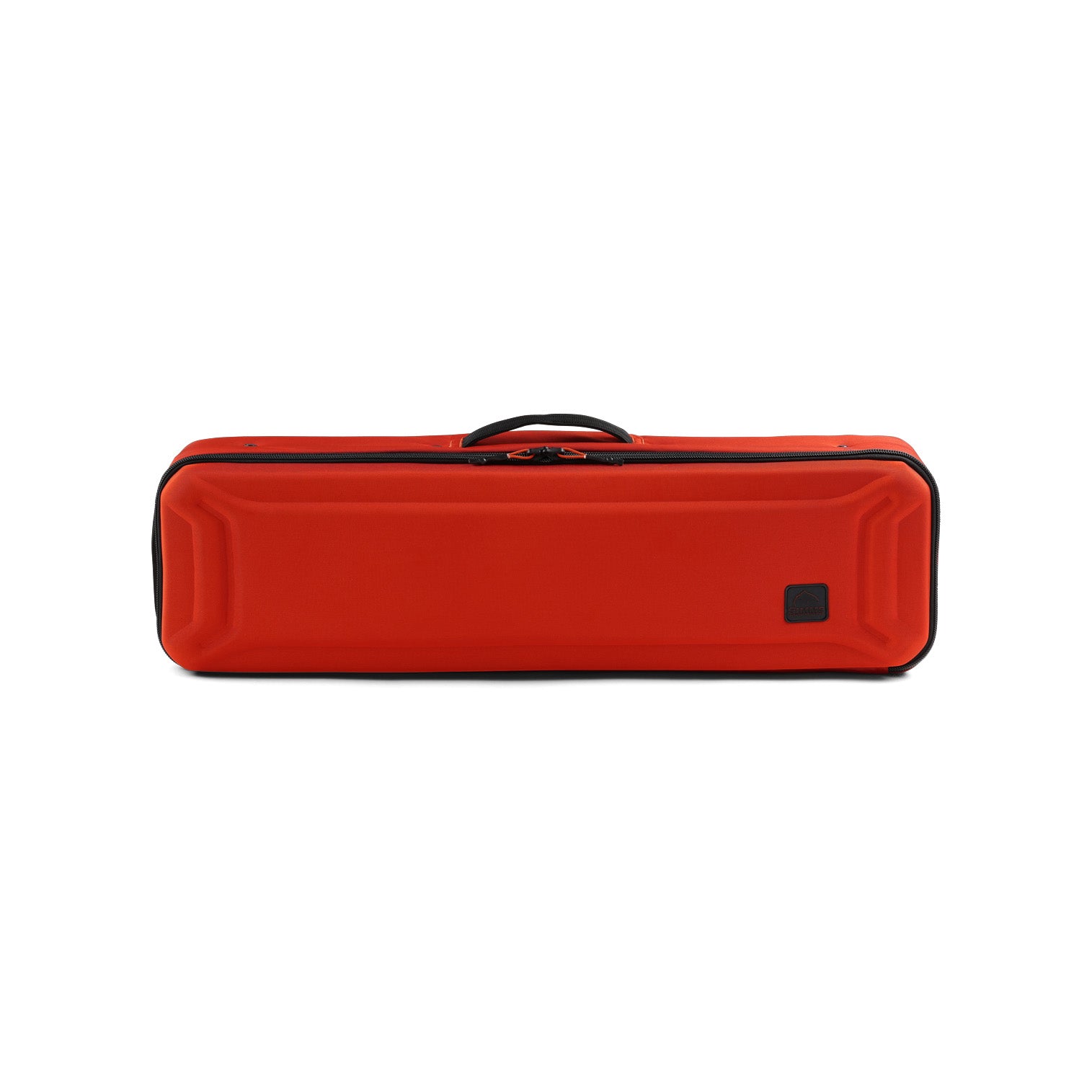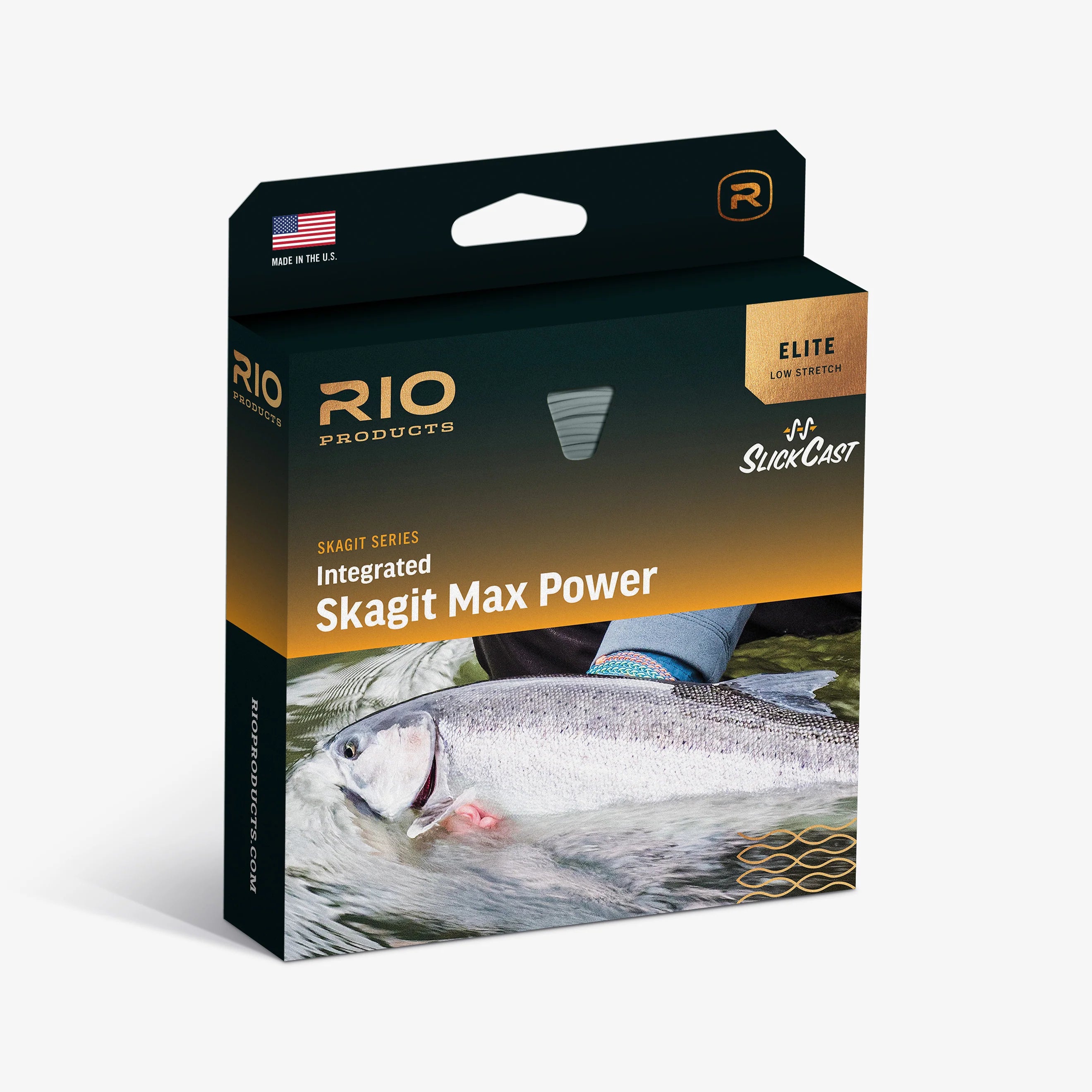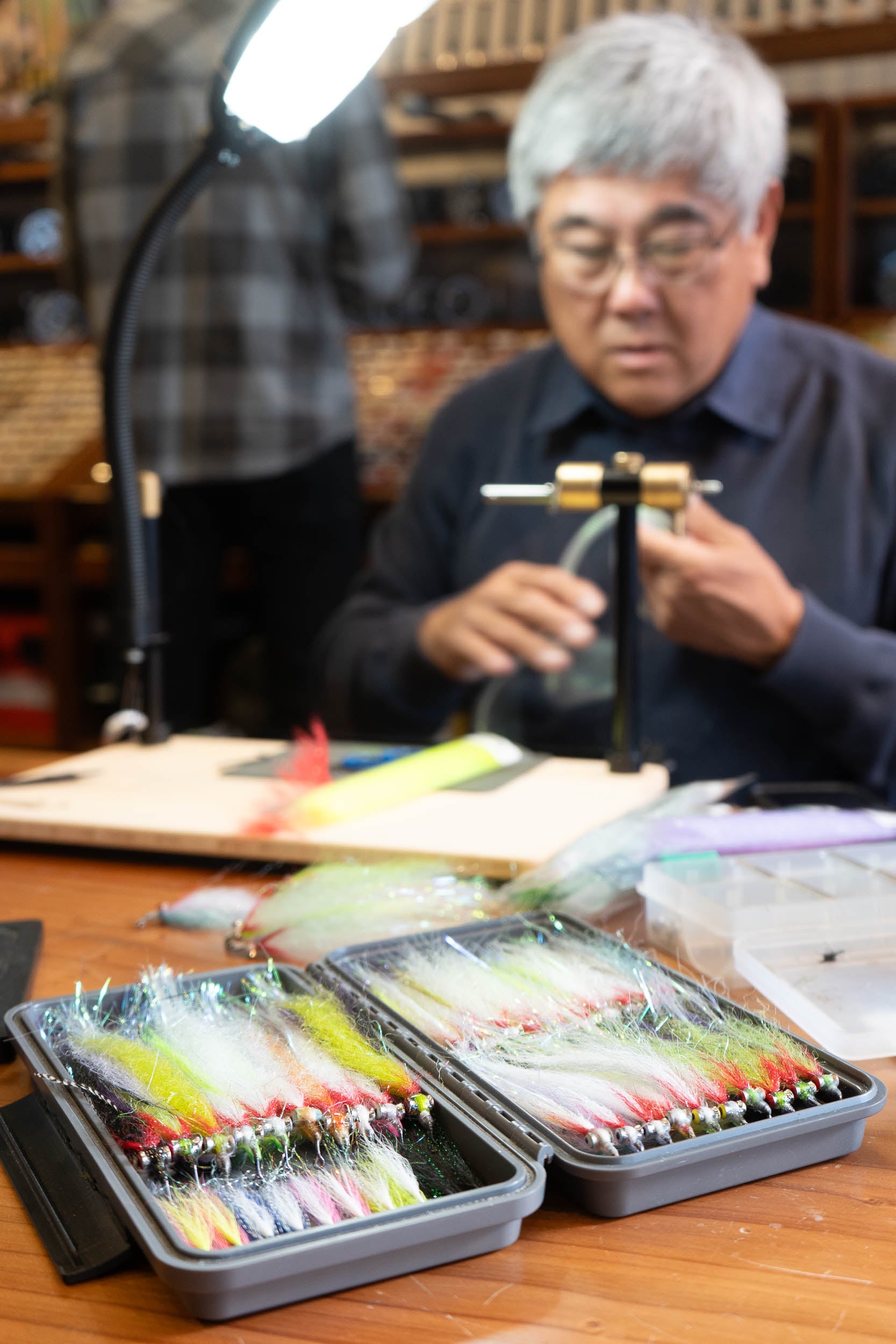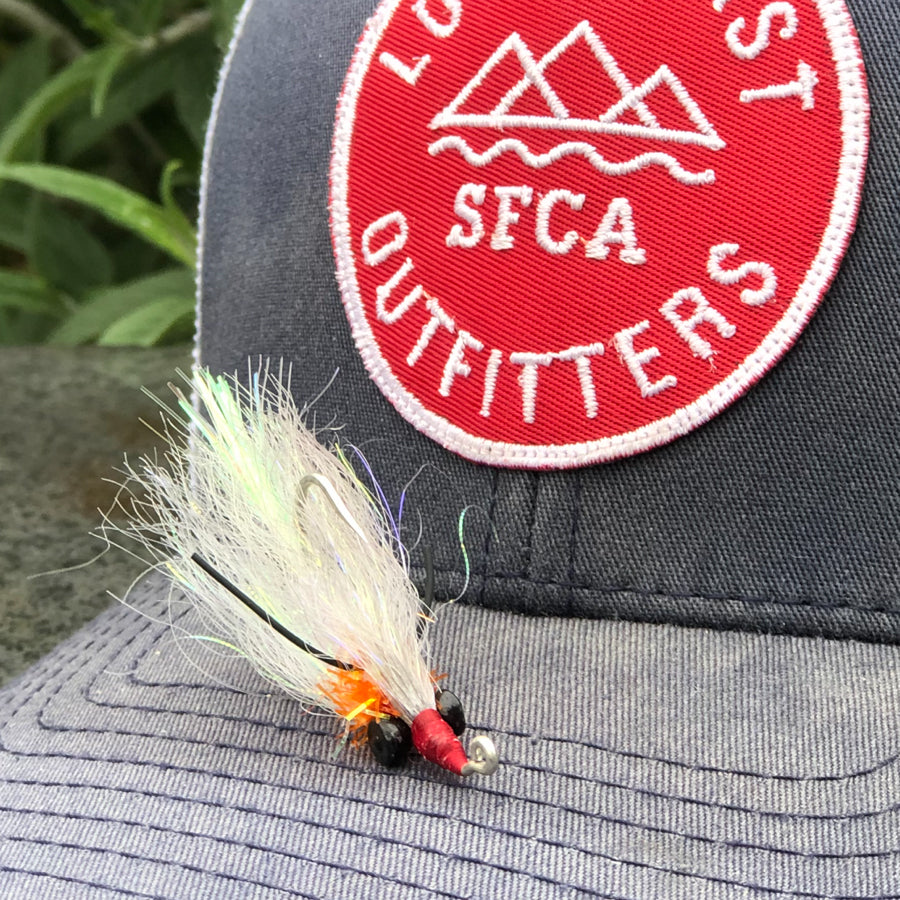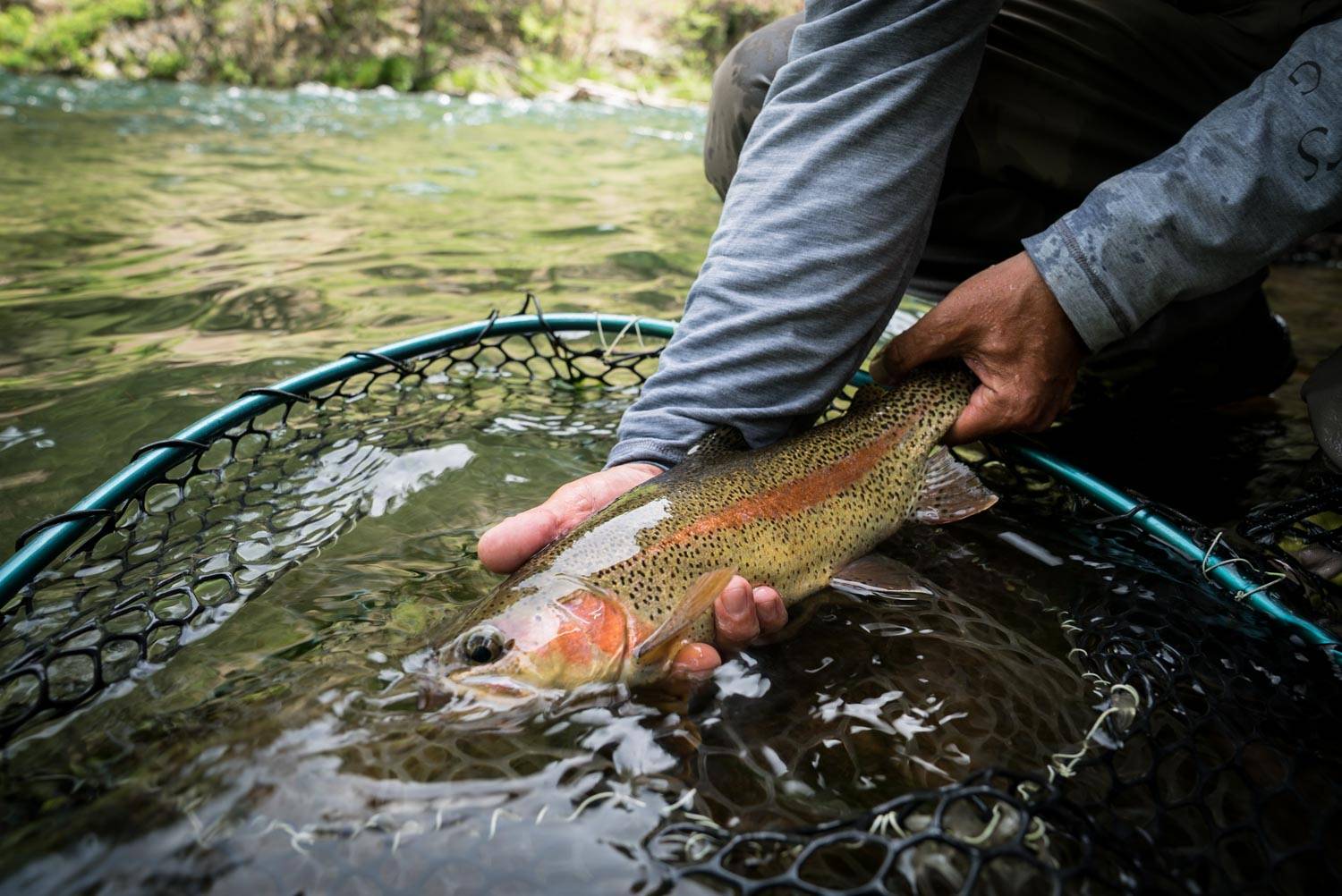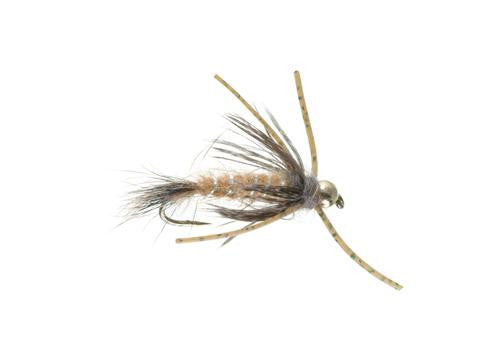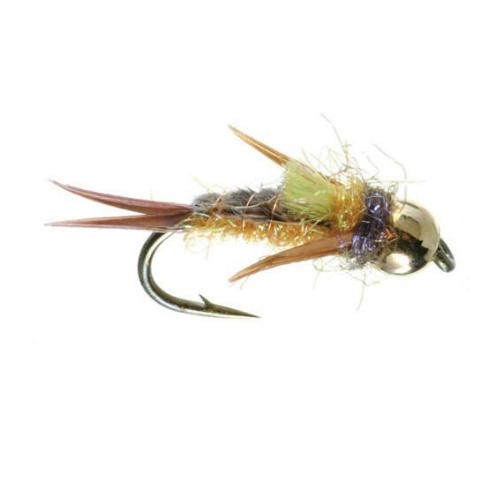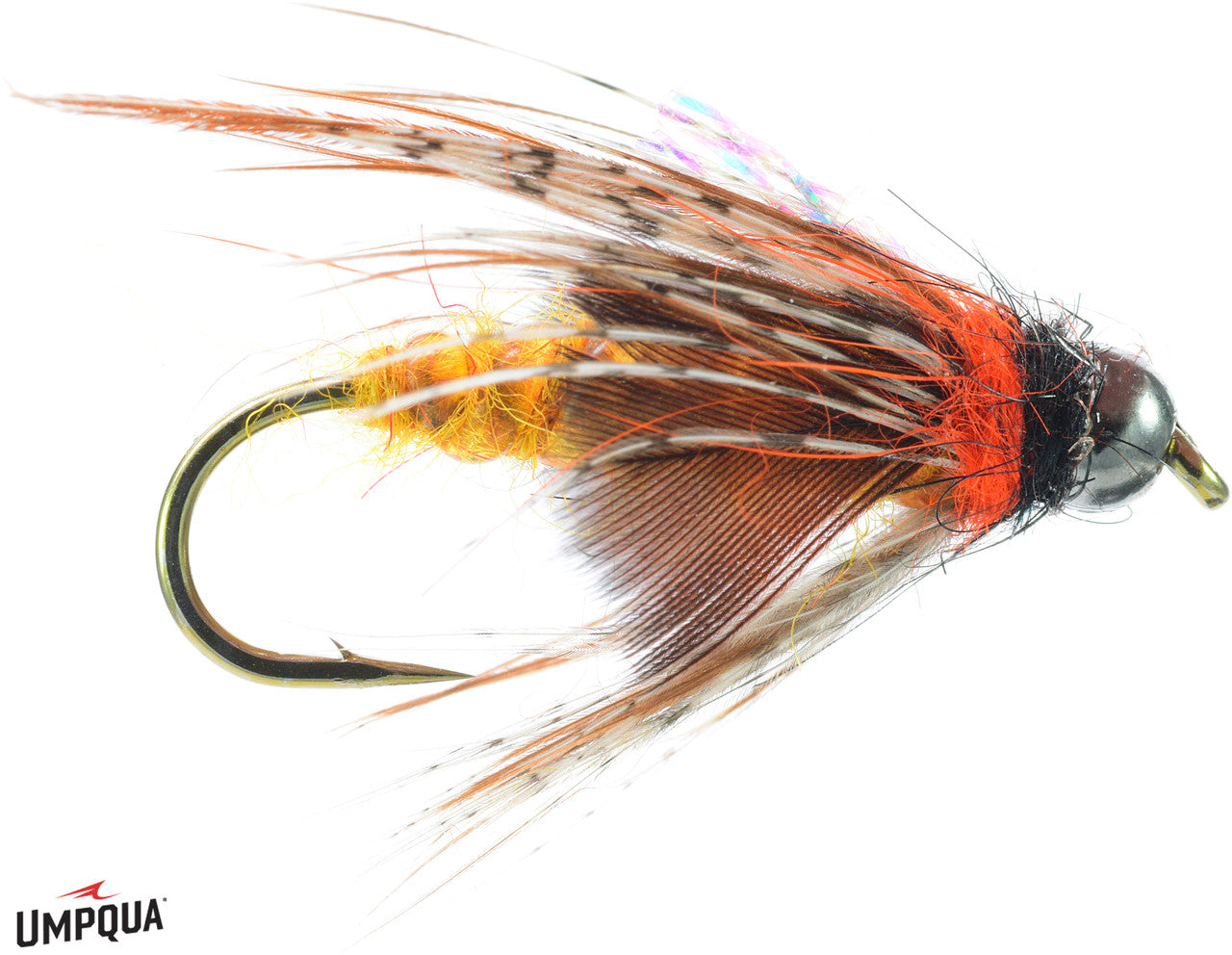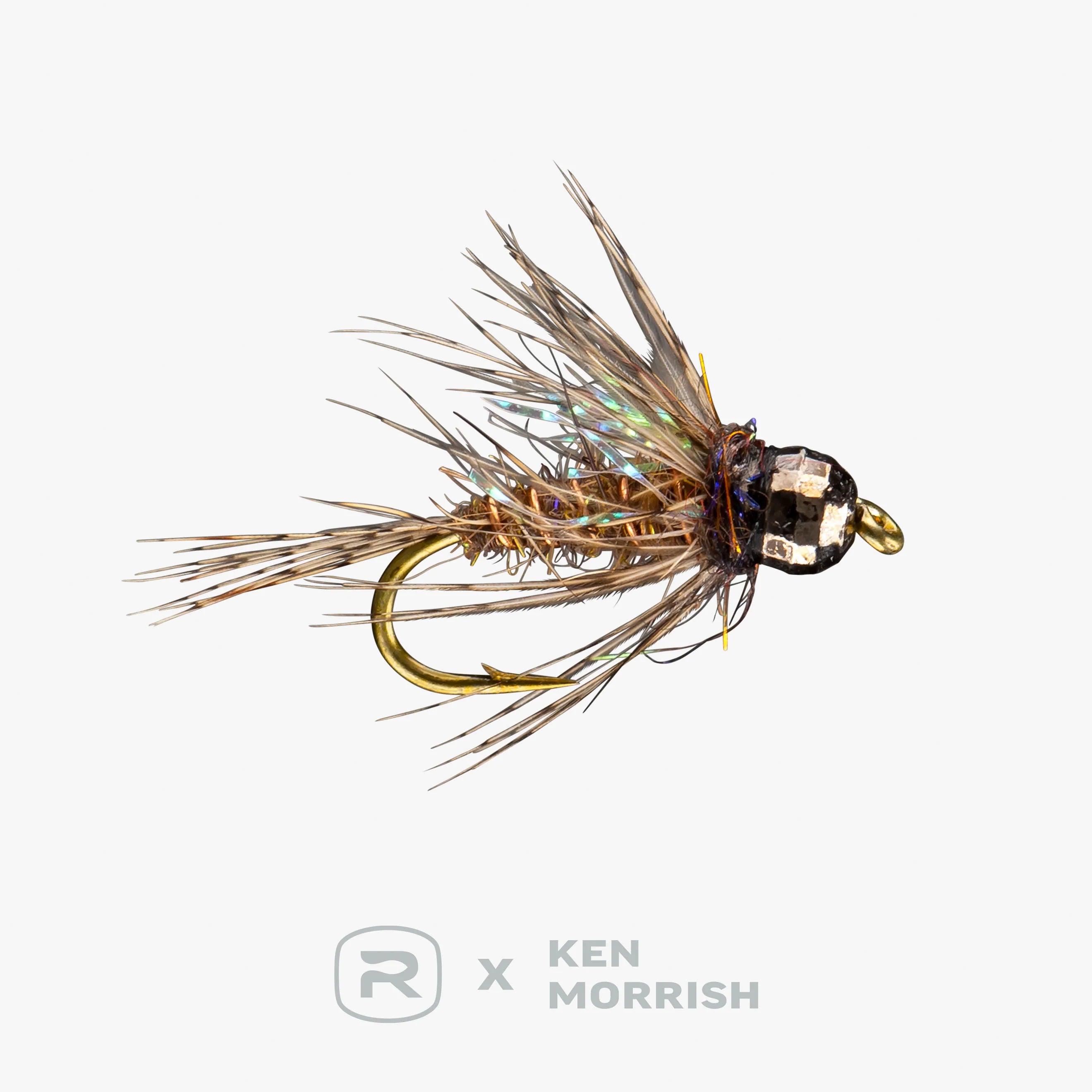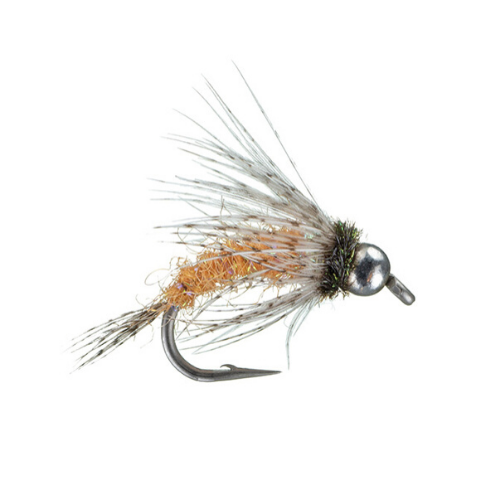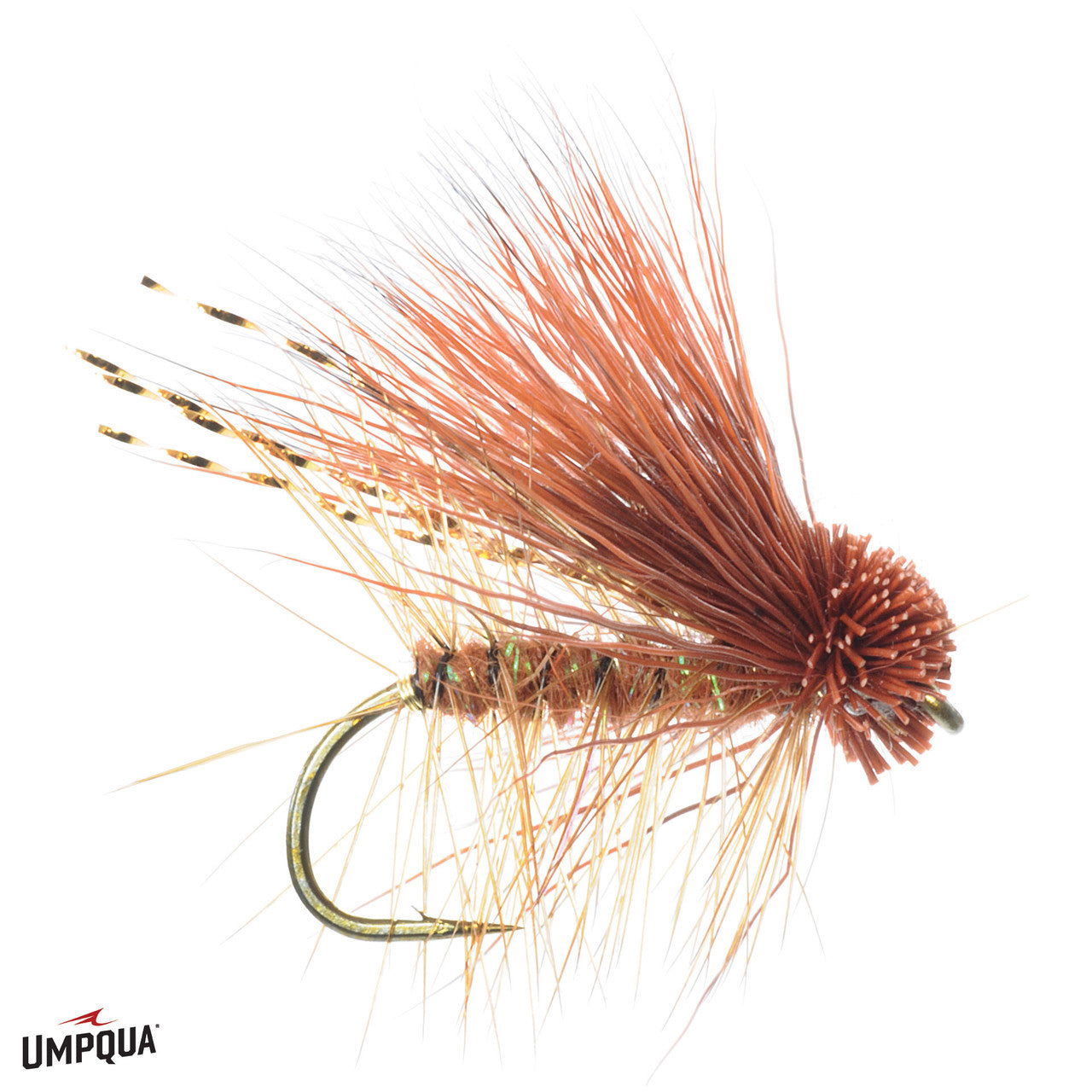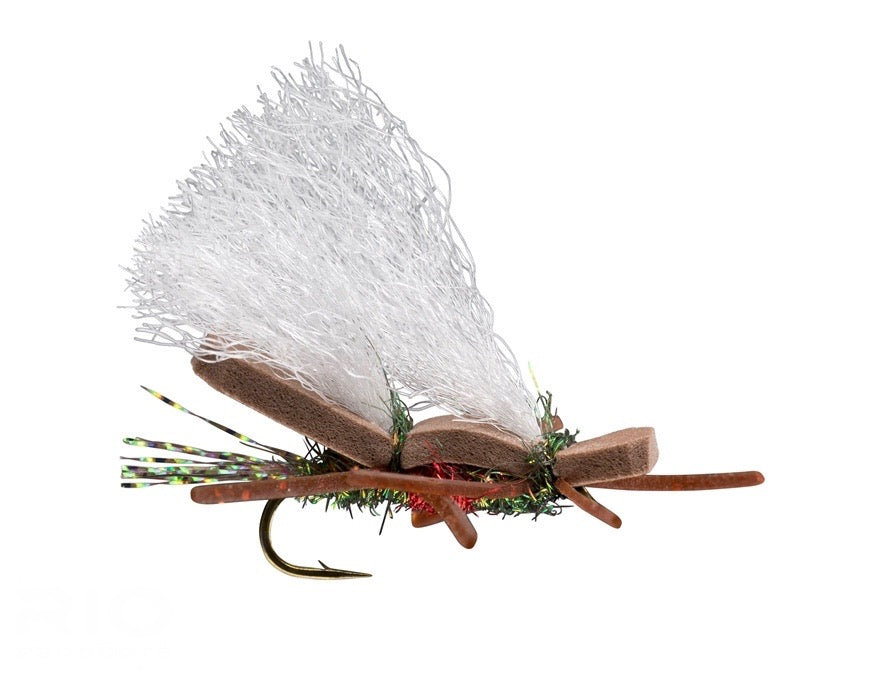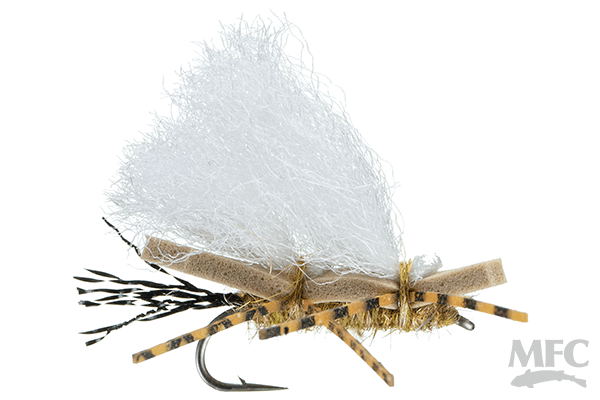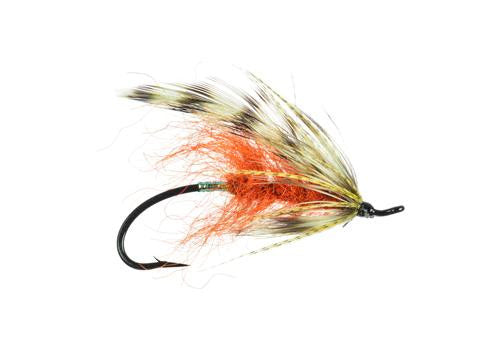Known by many names – The Church, The Cathedral, Holy Water, and The Jewel of the West Coast – the spring-fed McCloud River has long inspired awe. With names like these, you know we’re talking about a truly special place.
While many Northern California rivers were scarred by gold mining, logging, and heavy water use, the McCloud’s rugged terrain and lack of gold kept industry at bay. Today, the McCloud Dam divides the river into two distinct sections: the Upper and Lower McCloud.
The Lower McCloud feeds Lake Shasta alongside the Upper Sacramento, Pit, and other tributaries, providing both water and hydropower for much of Northern California. Above the dam, the Upper McCloud flows cold and clear, home to the native McCloud River redband trout, a fish as unique as the water it inhabits.
For anglers and adventurers alike, the McCloud River remains one of Northern California’s most revered trout streams, a spring-fed sanctuary flowing from the flanks of Mt. Shasta down into Lake Shasta far below.

Lost Coast Outfitters Guide to the McCloud River
What to Know Before You Fish
The McCloud River is as technical as it is beautiful, and that’s what keeps us coming back. Before you make the trip, here are a few things to know that’ll make your time on the water safer, smoother, and more productive. Be sure to check the latest McCloud River Fly Fishing Report before heading out.
The Difficulty Rating of the McCloud River: Advanced
We love this river — few places in California capture the beauty and challenge of fly fishing quite like the McCloud. It’s one of the most stunning spots you can spend a day with a fly rod in hand. While it’s not the wading nightmare of the Pit River, it does ask a little more of you: some hiking, careful footing, and a good dose of stamina.
This is classic Northern California fly fishing — steep canyon walls, slick rocks, and trout that reward patience and precision. Beginners can indeed find success here, especially with a guide or a bit of persistence, but during the heat of summer, presentation and fly selection are crucial. Public access is limited and faces regular pressure, so thinking like a trout makes all the difference.
We consider the McCloud one of California’s true gems. If you’re in decent shape and ready to explore, you’ll be rewarded. A good guide, solid drifts, and a positive attitude can turn a challenging day into one you’ll remember for years.
Hatches on the McCloud River
Blue Winged Olive - Spring and Fall
Midge - Year round
Golden Stones - May- June
Salmonfly - May and June
PMD - July - September
Little Yellow Stone - June and July
Caddis - Spring-Fall
October Caddis - Sept- November
Quick Tips for fishing the McCloud River
Fish the soft edges of the river.
Look out for rattlesnakes on the bank of McCloud. Here is a link on how to avoid rattlesnake bites.
Hunt, don't fish. Meaning keep your prey feeling like a predator.
Know when to hunt shade (when it's hot) and know when to hunt sun (when it's cold).
Fish dries all day if you want to. You'll find fish if you're good.
Morning and evening are the best times to practice in the summer if you are a beginner. Don't burn out my fishing too hard in the middle of the day.
When nymphing, if you are not snagging bottom, you are not fishing a long enough leader or enough weight.
Fish with smaller flies to catch more fish.
Cast large streamers quartered upstream near the bank and stripped quickly using the current to form a belly in your line. This is what the big Brown Trout like.
Look out for poison oak - it is everywhere. If you think you got it on you (you did), rinse all of your exposed skin with cold river water to help close your pores and rinse the poison off. Heat and sweat open your pores, allowing the poison to spread more easily. Bring along a couple of packets of Technu, a detergent formulated for poison oak.
Header
Use this content to share information about your store and products.
Rigging Tips
A few handy graphics for getting rigged up for the McCloud
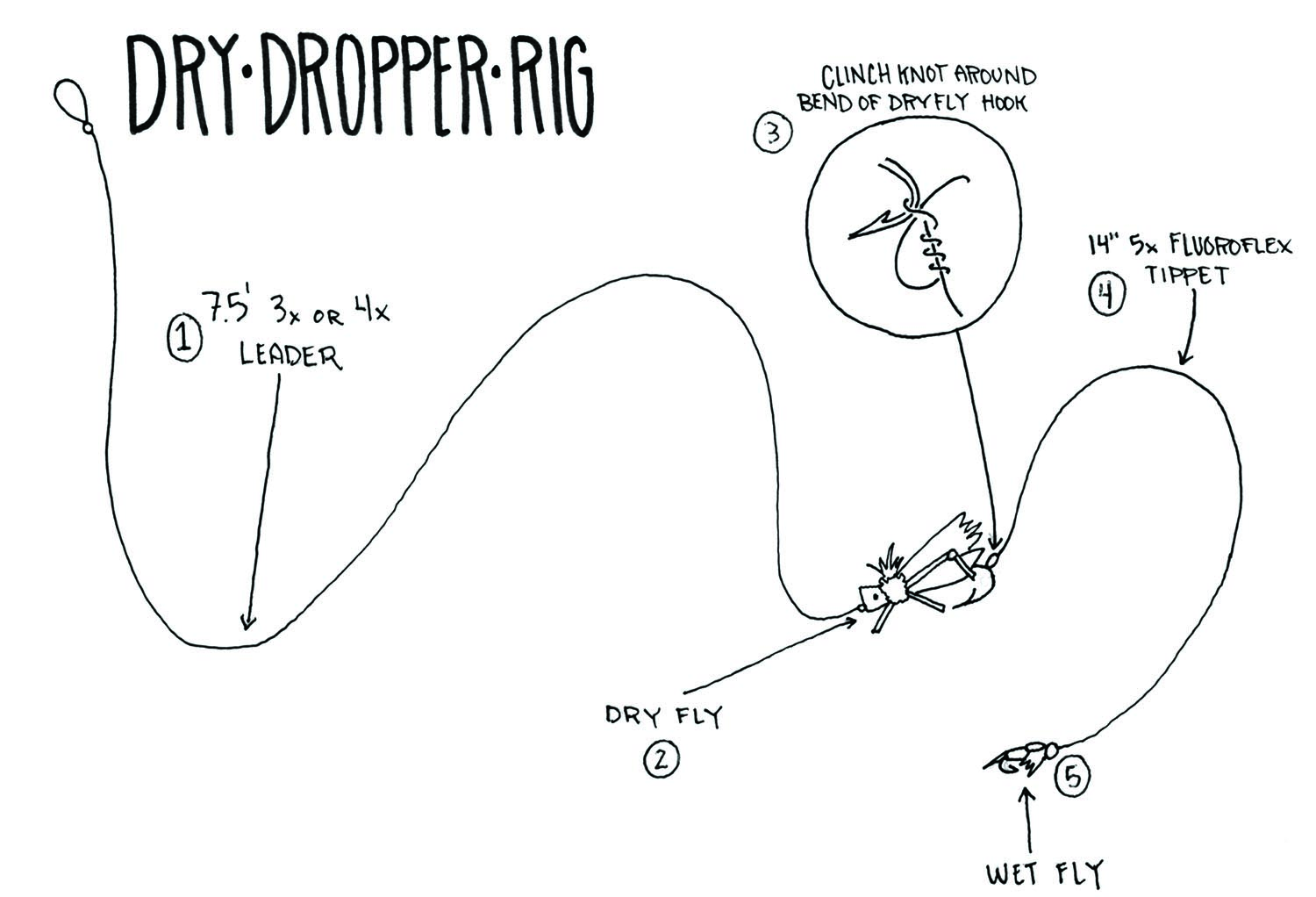
The Dry Dropper
A dry-dropper rig allows you to fish both the surface and subsurface at the same time. Tie a buoyant dry fly to your leader, then attach 18–36 inches of tippet with a small nymph or emerger below. The dry fly acts as both attractor and strike indicator—if it twitches or dips, set the hook. Ideal for riffles, pockets, and mixed-depth water, the dry-dropper is one of the most versatile and practical setups in fly fishing.
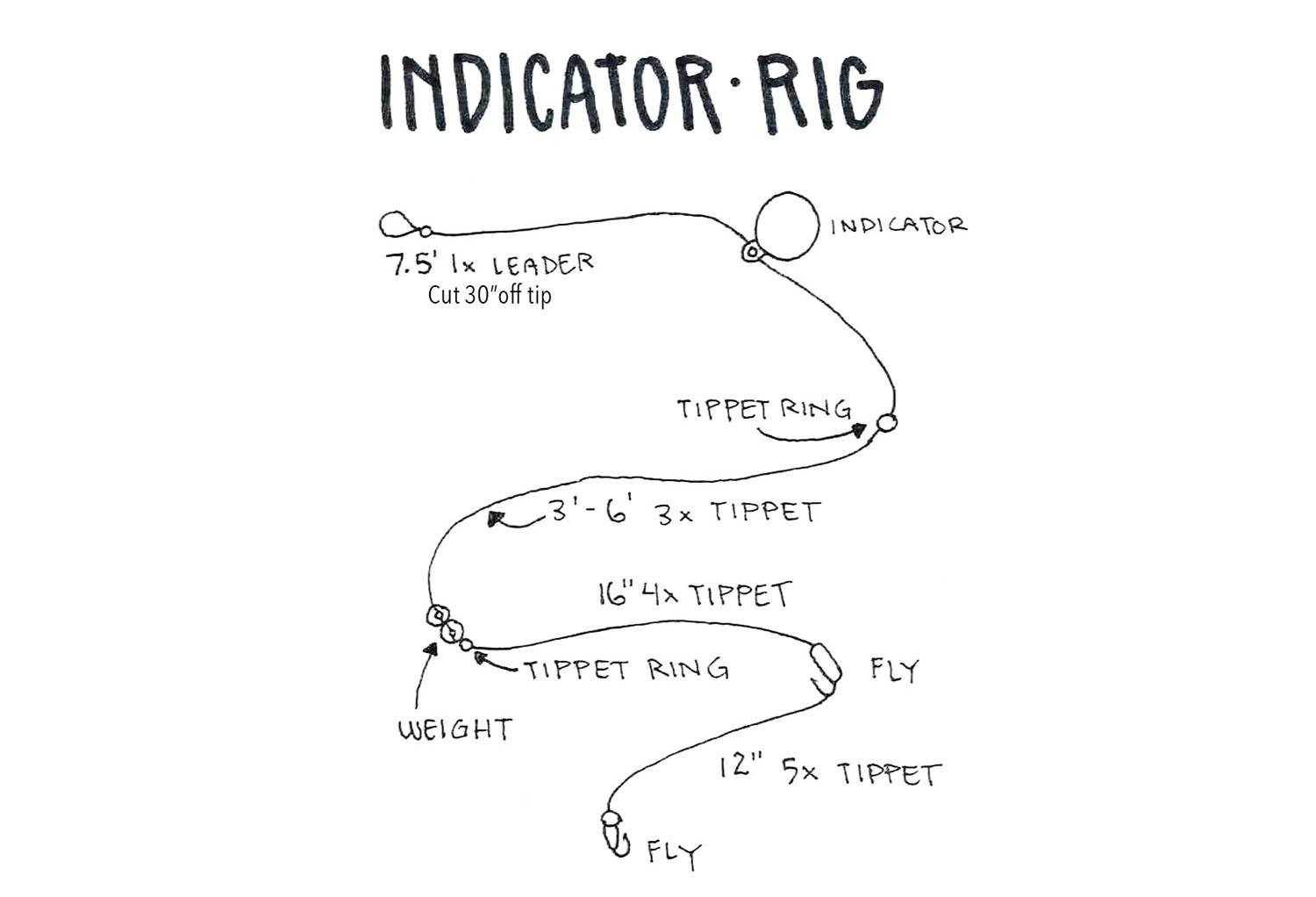
The Indicator Rig
An indicator rig is the go-to setup for nymphing deep or fast water. It uses a floating strike indicator (like a small bobber) to suspend one or more weighted nymphs below, keeping them drifting naturally near the riverbed where trout feed most. When the indicator pauses, dips, or twitches, it signals a strike. Perfect for winter or off-color water, indicator rigs offer precise depth control and consistent hookups — making them a cornerstone of modern trout fishing.

Tightline Nymph Rig
A tightline nymph rig—also known as a Euro or contact nymphing setup—eliminates the indicator and keeps you directly connected to your flies. Using a long, light leader with a sighter (a bright, high-visibility section), this rig allows you to feel subtle takes and control depth with precision. Weighted flies provide tension and contact, allowing for perfect drifts through seams and pockets. Ideal for clear water and technical trout, tightline nymphing delivers unmatched sensitivity and strike detection.
The Perfect McCloud Rod: The 10' 4wt
If there’s one rod that feels made for the McCloud River, it’s the 10’ 4wt. The McCloud’s boulder gardens, deep emerald pools, and swift pocket water demand precision and control—and that’s exactly what this rod delivers. The extra foot of length gives you better reach for high-sticking and mending line across tricky currents, helping you keep perfect drifts in complex water. It also loads easily for roll casts under overhanging trees and across tight quarters where backcasting is limited.
Built with the finesse of a 4wt but the backbone of a 5wt, a well-tapered 10' 4wt has the versatility to fish the McCloud from top to bottom—whether you’re tightlining with tungsten nymphs, swinging soft hackles through tailouts, or presenting a dry to a rising trout in a slick seam. Many anglers even overline it with a 5wt line for added punch and control.
For those who love the blend of delicacy and power—and want to reach that one perfect pocket just a few feet farther—the 10' 4wt is the McCloud River’s all-around champion. Experience the power of ten.
McCloud River Resources
Learn more about where to stay, and local fishing regulations on the McCloud River
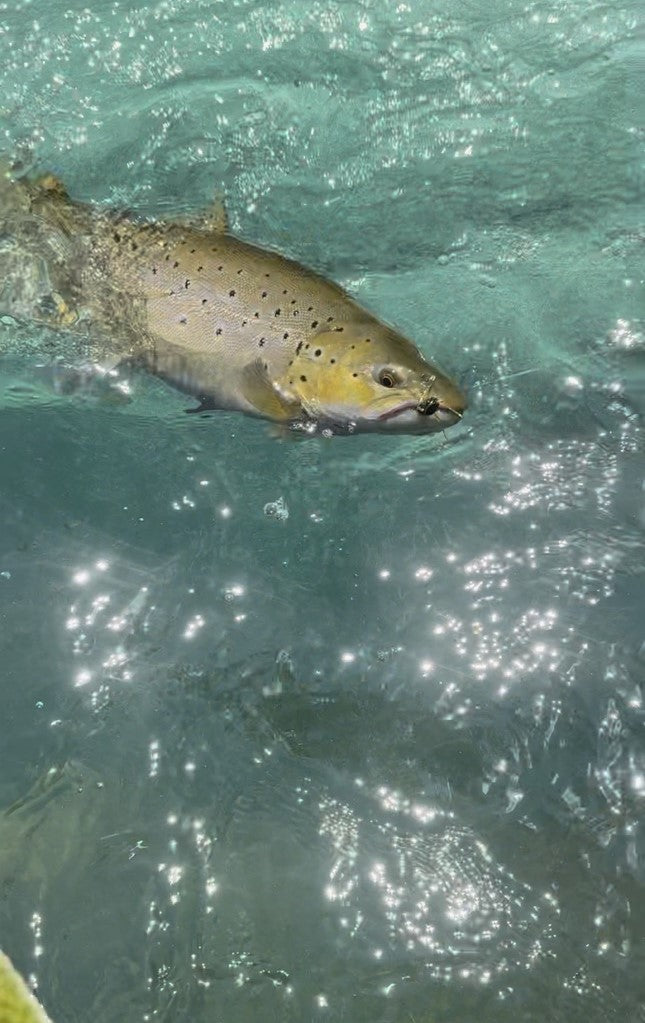
Camping and Lodging for Fly Fishing the McCloud
Ash Camp — McCloud River Access
- From the town of McCloud, turn left on Squaw Valley Road
- Follow it for about 10 miles over the dam.
- When the road comes to a T, turn right.
- Drive slowly and watch for the Ash Camp sign on your right — it’s easy to miss, especially at night.
When open, Ash Camp offers excellent access to the lower river and serves as a great starting point for exploring this legendary trout water.
Insider tip: It’s a popular launch point for anglers hiking downstream toward the Nature Conservancy property.
Ah-Di-Nah Campground — McCloud River Camping
- From McCloud, take Squaw Valley Road for roughly 10 miles, then turn sharply left just before the dam.
- Continue on this rough, 11-mile dirt road to reach Ah-Di-Nah Campground.
- A high-clearance or AWD vehicle is strongly recommended.
Ah-Di-Nah is one of our favorite places to camp on the McCloud River. A trail runs along the west (campground) side of the river, and several primitive campsites sit between Ah-Di-Nah and the Nature Conservancy property.
Insider tip: Bring everything you need — this is remote country, but the solitude and scenery are worth every bump in the road.
The Nature Conservancy Preserve — McCloud River
Visit the Conservancy Website to Book
- The preserve allows 10 anglers on the water at a time, all catch-and-release only.
- Five spots can be reserved in advance through the Conservancy’s San Francisco office: (415) 777-0487.
- The remaining five spots are first-come, first-served, with reservations held until 10:00 a.m. on your fishing date.
The Conservancy section is iconic McCloud water — cold, clear, and home to wild rainbows that will test your skills.
Insider tip: Book early and wade quietly; this stretch rewards patience, precision, and stealth.
Pro Tip
We always recommend exploring both Ah-Di-Nah and the Conservancy water — they showcase everything that makes fly fishing the McCloud River one of the most memorable experiences in Northern California.
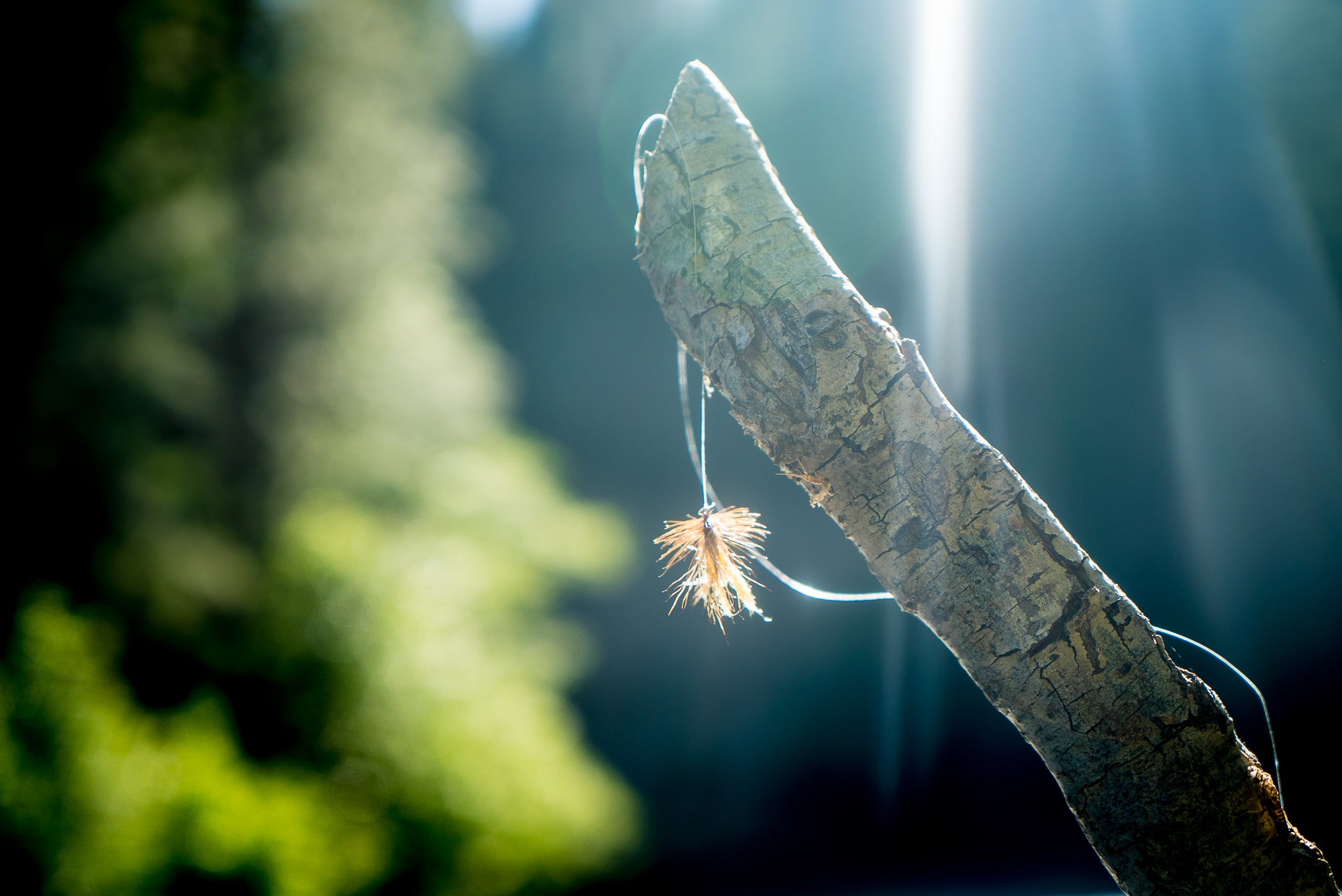
McCloud River Fishing Regulations
These are the regs as of 2025
- The River is open year-round
- Fish Barbless
- Catch and Release unless otherwise stated
- Pick up your garbage and be a good person; also, please pick up any trash you see.
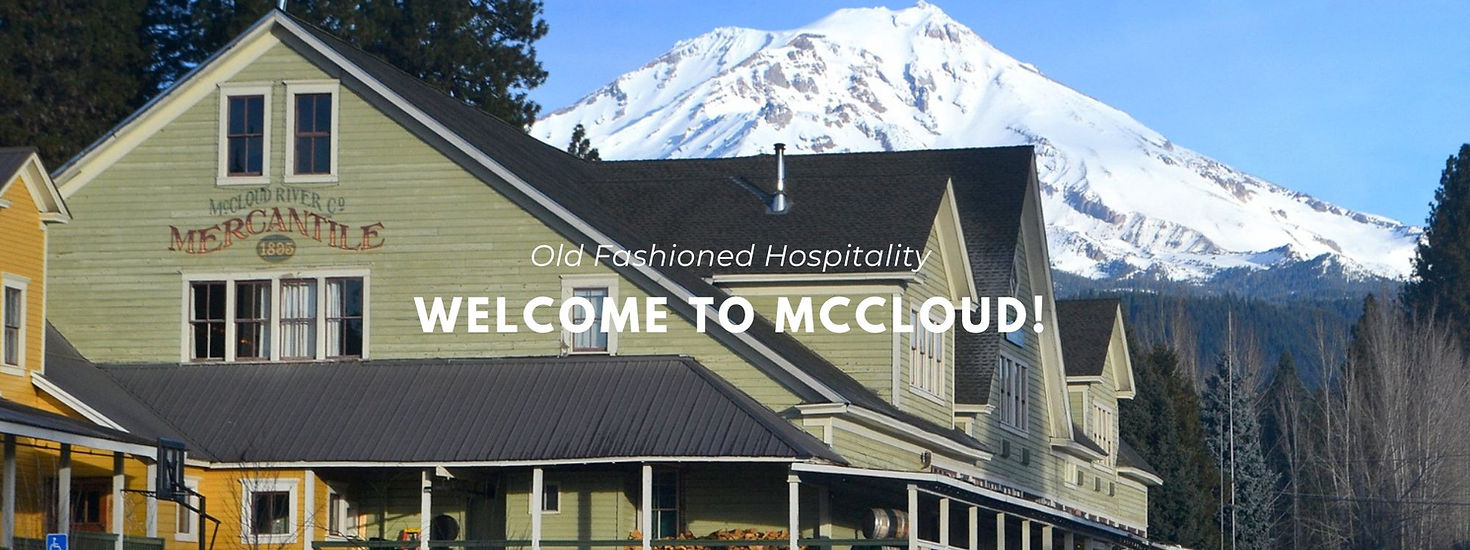
The Town of McCloud
Population: 945
Fishing: The McCloud River
The Local Fly Shop: There isn’t a dedicated fly shop in McCloud, so if you’re headed that way, your best bet is Ted Fay Fly Shop in downtown Dunsmuir. Since 1950, Ted Fay has been at the heart of Northern California fly fishing. Just minutes from the Upper Sacramento and a short drive to the McCloud, it’s where anglers load up on proven local flies, solid gear, and the latest river intel. More than a shop, it’s a community hub—and where countless McCloud adventures begin.

The Town of McCloud
Low Key & Easy: Siskiyou Brew Works - A relaxed, small-town brewery just down the road in McCloud serving up wood-fired pizza, cold local beer, and a friendly mountain vibe. Perfect for winding down after a long day on the river — no pretense, just good food, good folks, and plenty of stories.
Burgers: Floyd's Frosty - A true NorCal roadside classic in McCloud. Stop by Floyd’s for a stacked burger, crinkle-cut fries, or a milkshake on a hot afternoon. It’s casual, quick, and exactly what you want after hiking out of the canyon.
The Date Spot: Sage Restaurant | The McCloud Hotel - Tucked inside the historic McCloud Hotel, Sage offers farm-to-table dining with a mountain-modern twist — think local ingredients, fine wine, and candlelight. Perfect for celebrating a big catch or wrapping up your trip in style.

